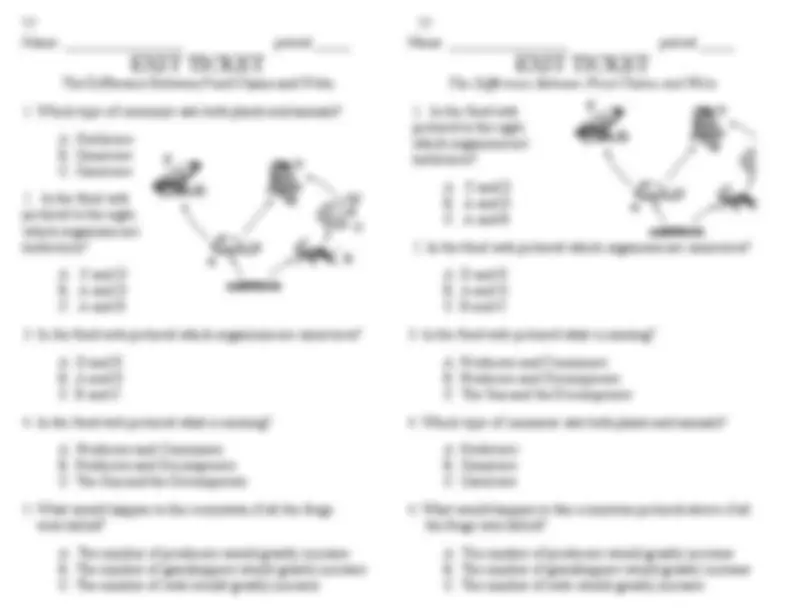



Study with the several resources on Docsity

Earn points by helping other students or get them with a premium plan


Prepare for your exams
Study with the several resources on Docsity

Earn points to download
Earn points by helping other students or get them with a premium plan
Community
Ask the community for help and clear up your study doubts
Discover the best universities in your country according to Docsity users
Free resources
Download our free guides on studying techniques, anxiety management strategies, and thesis advice from Docsity tutors
The difference between food chains and food webs in ecosystems, using examples and activities to illustrate the concepts. Food chains represent one energy path, while food webs show a more complete picture of energy flow with multiple overlapping food chains. The document also covers the roles of herbivores, carnivores, and omnivores in food webs.
Typology: Lecture notes
1 / 3

This page cannot be seen from the preview
Don't miss anything!


A food chain shows one energy path in an ecosystem. A simple food chain always contains a producer, a primary consumer and a secondary consumer and a decomposer. But most organisms are part of more than one food chain. Scientists often use a food web to show a more complete picture of the flow of energy in an ecosystem. A food web is a system of several overlapping food chains. Directions: In the food chain below draw in the arrows and add a decomposer. Consumers are classified by what they eat. Consumers that eat only plants are called herbivores. Deer, chipmunks and most insects are herbivores. Consumers that eat only animals are called carnivores. Badgers, cougars and wolves are carnivores. A consumer that eats both plant and animals is called an omnivore. Birds, goats and monkeys are omnivores. An omnivore can play more than one role in an ecosystem. For example, a large fish in in a pond will eat both little fish and algae (microscopic plants). When it eats the algae it is a primary consumer. When it eats little fish it is a secondary consumer. Directions:
Materials: Edge of Pond Ecosystem paper, colored pencils What To Do